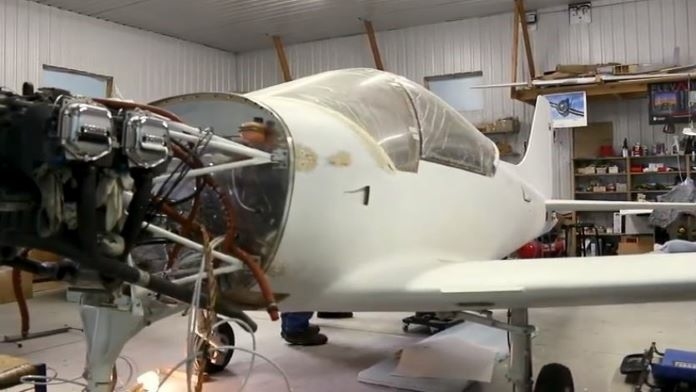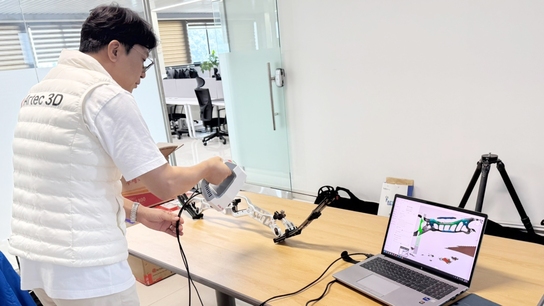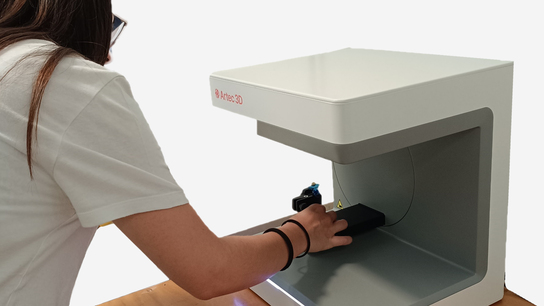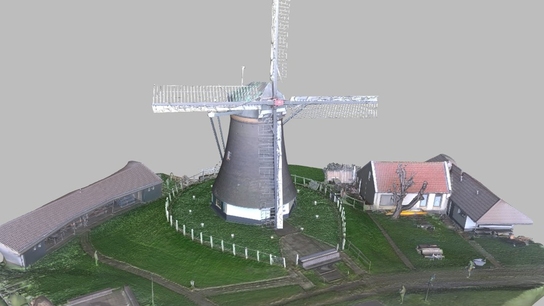Reverse engineering with Artec Eva helps build landing gear doors of Italian 1955 Falco airplane
Summary: Using Artec Eva to reverse engineer landing gear doors for a classic 1950s plane.
Goal: To build functional, strong, and lightweight doors for a plane’s landing gear compartment with high accuracy to ensure the plane can fly and land safely.
Tools Used: Artec Eva, Geomagic for SOLIDWORKS
The Sequoia Falco. Designed in Italy and first flown in 1955, this two-seater aerobatic aircraft still holds up in 2019, considered by many aviation fans and pilots as the best handling and strongest plane, not to mention very pleasing to the eye.
Following in the footsteps of designer Stelio Fari, plane enthusiast Michael Shuler set out to build his own Falco. Even for aviation experts, though, building a classic airplane designed more than 60 years ago in today’s modern world of manufacturing doesn’t come without challenges.

A modern recreation of the 1955 Falco, a plane that has stood the test of time. Photo courtesy of Javelin Technologies Inc.
While assembling his plane, Shuler met a roadblock when it came to construction of the landing gear doors. Landing gear – the wheeled support system that allows planes to land, take off, and move around on the ground – are typically kept tucked into the bottom of the plane, when not in use. Comprised of two landing gear doors that need to fit perfectly and function within the surrounding parts and surfaces, the area is small and not the easiest to reach.
As with any vehicle, measurements play a vital role in ensuring safety (and in the Falco’s case, aesthetics) but given the complexity of the area, gathering accurate data would be difficult and time-consuming.
With this in mind, the services of Javelin Technologies Inc., a Gold Certified Partner of Artec 3D, were called upon.
Located on the belly of the plane, landing gear doors weren’t easy to access.
“Whether the landing gear can actually be deployed or not can mean the difference between life and death, so the doors are very important,” says Senior Applications Specialist Deandra Reid. “It’s a crucial part of the plane to function.”
With such strict adherence to accuracy required, manual measurements were out of the question – besides how long it would take, chances of error would be high.
“The cavity where the landing gear fits is not perfectly flat,” Reid says. “You can imagine the difficulty and risk involved when trying to measure that curve, and to figure out the angles of how the landing gear actually fits in.”
With this variety of depths and angles, the versatile 3D object scanner Artec Eva was chosen for the task at hand.
Artec Eva has stayed a popular solution for creating quick, textured, and accurate 3D models. Easy to use and incredibly precise, Eva is best suited for medium-sized objects and reverse engineering machine parts. Eva has shown its excellence across a variety of industries ranging from rapid prototyping to forensics and prosthetics to aerospace.
“It’s a lot easier to use Eva to scan an area with those differences,” Reid explains. “I was able to do it within an hour with Eva.” In total, scanning and processing was done within one day.
Removing the risk of measurement error with the scan, the next important task was to ensure that the two doors open and shut in order for the landing gear to retract or extend during landing or takeoff. “We used that scan not only for measurements to create the actual parts, but as a reference to account for the dimensions around that area, to ensure that the doors will actually fit and function correctly, and that everything around it works together well.”
Once the scanning is done, the data is converted into 3D CAD models.
With the scan completed, the next step was to create a digital copy of the underside of the plane that could be used to design the landing gear doors. Using the Geomagic for SOLIDWORKS plugin, 3D models made with Artec scanners can be exported from Artec Studio, which provides an intuitive environment for basic 3D modeling, to SOLIDWORKS in just one click. Allowing a seamless workflow and reduced time, Geomagic for SOLIDWORKS gives users the possibility to extract both simple and complex surfaces and features to provide high accuracy and in this case, ensure a perfect fit.
For Shuler, using scanning for this part of his project was pivotal. To avoid costly delays, lengthy reworks, and wasted efforts, he wanted to make sure he got it right the first time – Shuler set out to build the Falco in the hope of flying it once everything was assembled.
With a prototype of the landing gear doors 3D printed and approved, this plane project is belted up and ready to go.
Next step: Takeoff!
Scanners behind the story
Try out the world's leading handheld 3D scanners.





